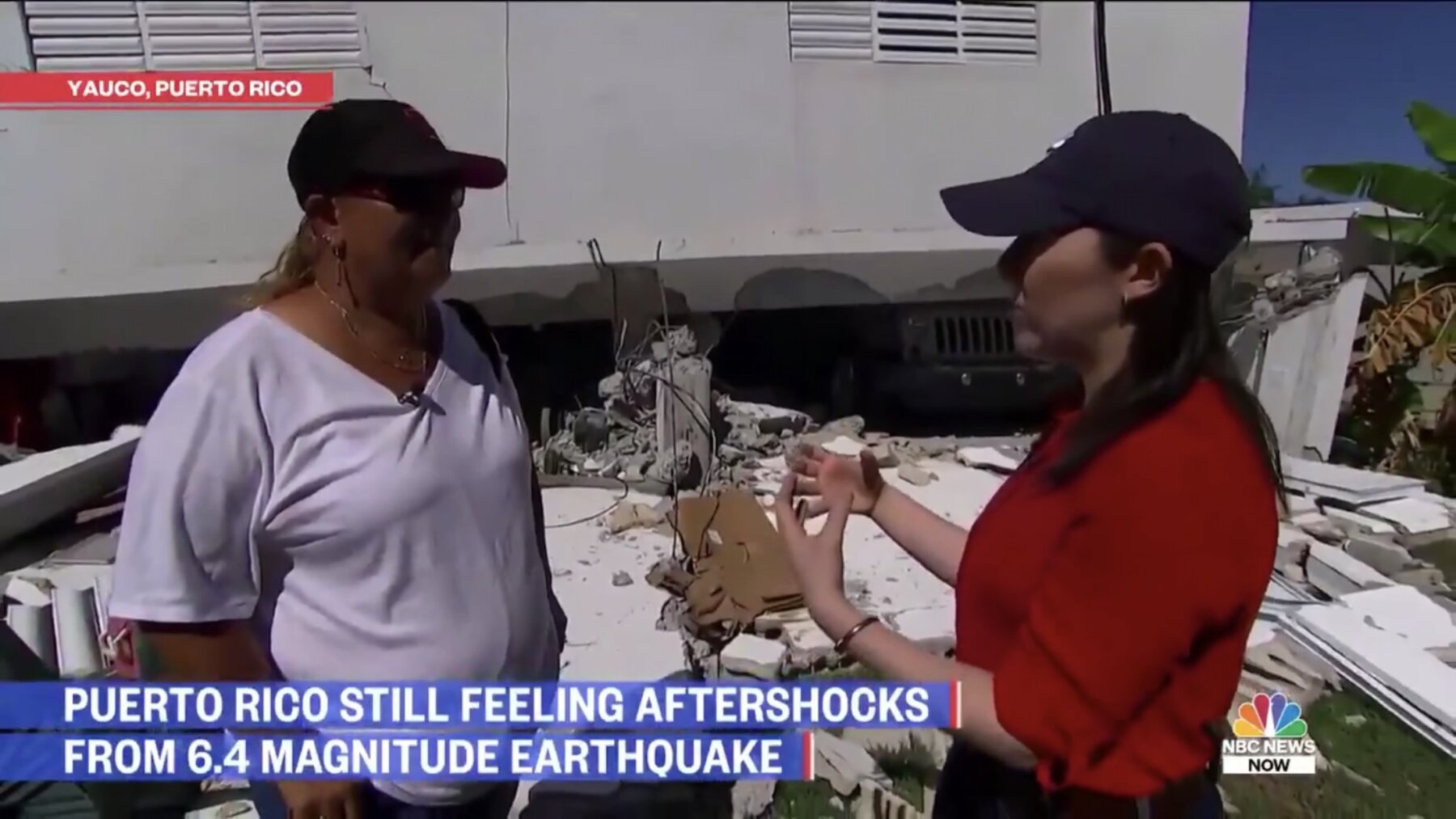
When NBC News reporter Nicole Acevedo was assigned a story about the impact of President Joe Biden’s student loan forgiveness plan in 2022, she set out to interview a dozen program applicants about what it would mean to their finances and futures. However, one of the applicants’ stories surprised her, making her pivot to a trauma-informed approach: The interviewee mentioned how a sexual assault during college caused her to take a leave from school, impacting her loans.
“I tried to assess where the person was in that process,” Acevedo said. “Does it feel like it’s very fresh? Or even if it happened a long time ago, sometimes when people talk about these things, they’re transported back into that moment. And is that what I’m experiencing with this person? Do I have a sense that that’s what’s happening?”
Trauma-informed journalism — or reporting stories with an understanding of trauma and how it impacts victims — has become more common in recent years. From the #MeToo movement to the Covid pandemic to war, it’s become much clearer how trauma touches the stories journalists tell. Between 80% and 100% of journalists have been exposed to traumatic events at work, according to ongoing research at Columbia University’s Dart Center for Journalism and Trauma.
“In a way, every story should be trauma-informed,” said Bruce Shapiro, the center’s executive director. “So much of reporting involves the worst things that happen to people – everything from intimate partner violence to war, torture and genocide. They pose the most fundamental questions to society about how to keep people safe.”
Common traumatic incidents journalists have witnessed include car accidents, fires and natural disasters, according to the Dart Center. When covering those, Shapiro said, it’s important to speak to the victims in a way that makes them feel safe, provide transparency and tell their stories in acute detail, Shapiro said.
I spoke with several trauma-informed journalists about how they approach reporting on traumatic events. Here’s what they had to say.
Prepare with trauma-sensitive interview techniques
Acevedo was well-equipped for the interviewee who talked about their sexual assault because she utilizes trauma-informed reporting in her coverage of Latino communities for NBC Latino, including stories about immigration and Hurricane Maria’s aftermath.

But for journalists who may be new to covering traumatic events, Shapiro advises reporters to plan for their interviews. Before talking to a trauma survivor, journalists should do as much research as possible on who they are and what they went through. They should also familiarize themselves with how trauma works. He referred to Dart Center psychiatrist Dr. Frank Ochberg’s “three acts of trauma”: the breaking phase, when it’s new and fresh; the recovery phase, where the victim comes to terms with what happened; and the acceptance phase, where healing may or may not occur.
Next, the reporter should plan interview questions and where they want the conversation to go. It’s important to make them feel safe and give them more of a say in the interview location and who will be present during the interview. “Survivors are not sure who to trust and who not to trust,” Shapiro said. “So we need to do things like show up on time, not go past the time we asked for, or at least get permission if we’re going to go longer. Be extra transparent about who we are and what we’re doing.”
Acevedo said that when she’s worried an interviewee may easily get retriggered, she starts off with easy-to-answer, fact-based questions, like, “How old are you?” to ground them in the current moment. “I just try to bring them back when their head is going that way, because I don’t want to exhaust the person during an interview,” she said.
Former TV journalist, certified trauma professional and author Jeanie Y. Chang said retriggering is likely to happen — and trying to avoid doing so may seem like the reporter is downplaying what the survivor went through. “It’s almost easier to be direct,” she said. “Say, ‘I know this is tough. I’m here to ask some questions. But if there are some questions that are too hard for you, just tell me.’”
Try to prevent retriggering when you can
For nearly 15 years, journalist Tamara Cherry reported on traffic accidents, fatal fires and homicides for the Toronto Star and Toronto Sun newspapers and Canada’s CTV Network. Now, she advises journalists on using trauma-informed techniques through her communications and public relations firm Pickup Communications.

Cherry instructs reporters to ask the people they’re interviewing how they want to be identified — as a survivor or a victim, or even how they want their name to appear. Once, she did media outreach for a military veteran who didn’t want to only be referred to by his last name on second reference, a common journalistic practice, because it triggered his post-traumatic stress disorder from his days as a cadet.
“For him, just being referred to by his last name was very triggering,” Cherry said. “It’s just like if you’re going to ask someone what their pronouns are. The stakes are so incredibly high for that victim or survivor and for your reporter, as well.”
Cherry also advises journalists to be particular about what kind of visuals to use for stories dealing with trauma. Based on research she did for her book “The Trauma Beat: A Case for Re-Thinking the Business of Bad News,” Cherry suggests that if the story has a visual — such as an accident where one car of people survived and the other car had people who died — journalists should use the footage of the car where the passengers survived. The script can include a line saying, “Out of respect for the victim’s family, we are only showing the vehicle where everyone survived.”
“It’s the validation for those victims and survivors that are watching from home or that will be Googling the case because so many of them undoubtedly will, in the days, weeks, months to come,” Cherry said. “Because those images, not only do they stick in the minds of victims and survivors, but once we’ve used an image like that, it’s in the archive, and they will be used again and again.”
Write the story with extra care and review
When it’s time to write a story, Acevedo takes great care in framing it and centering on the victim’s or survivor’s perspective. “I try to write the story, thinking, ‘Who has the most to lose here?’ And it’s usually the people that I’ve interviewed,” she said. “And I consider, ‘How do I frame this story in a way that demonstrates that?’ Then I start to figure out what’s the accurate language and the right framing, just making sure that I’m centering the person most affected.

It’s common journalistic practice and a policy at most news outlets to never let sources review a reporter’s story before it goes online or live on TV. “At NBC, we train our reporters to empathize and connect with their sources,” said Nina Sen, NBC News standards director of race, class and gender. “We can also give sources anonymity. For example, we never name sexual assault victims unless we ask permission, and we feel they would be comfortable being public.”
The bottom line is to make survivors feel safe and centered during the process. “If you are worried about showing a survivor your story and them withdrawing their consent, you’ve probably done something wrong along the way,” said Cherry, who often reviews reporters’ stories dealing with trauma. “I know that feeling where you let a story go to air and you just hope the family likes it and they don’t call you in tears saying you got this fact wrong. We should never be holding our breath for that.”
Shapiro advises journalists to let survivors or victims know about the reporting, editing and fact-checking process their piece may go through before going live. “Sometimes give a little more review of quotations than we would otherwise give and be transparent about fact-checking,” he said. “Really carefully explain that fact-checking is for their protection, so we can defend their testimony. Those aren’t extravagant, radical departures from journalism practice, but they do require a constant alertness.”
Remember self-care
While writing her book, Cherry looked back at her journals from 2006 and 2007, when she covered crime for the Toronto Star and Toronto Sun, and she saw entries about how awful she felt. “There were clear signs that I was not OK with some of the things that were going on,” she said.
And that’s why it’s important for journalists who cover traumatic events to keep an eye on their mental health. Rates of PTSD among journalists vary but can be as high as 59% depending on their geographic location and the beat they cover, according to ongoing research at the Dart Center.
Chang suggests that journalists get some distance from the tough stories they’re working on. “You need your whole other life outside of the job,” she said. “Drop that actual story from your head and move on for a second. And then obviously, you have to come back to that as you’re writing.”
Shapiro, who has written about self-care practices for NBCU Academy, emphasizes that all reporters — whether they cover trauma or don’t — should have a self-care plan.
“It’s as important to the success of your story as verifying facts and checking,” he said. “Reporters who don’t take care of themselves are not able to be fully present for the survivors whose stories they’re trying to tell, or for the community who they’re trying to serve by telling a good story.”



